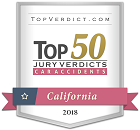May 21, 2014
Originally published by James Publishing.

Professional Employment Organizations (PEO)
The modern corporation outsources many personnel functions, including hiring, training, payroll and Workers’ Compensation coverage. In 2010, it was estimated that there were 2 to 3 million workers who were employed through Professional Employment Organizations (PEO). Under this system, the PEO (regular/lending employer) provides workers to the business (special/borrowing employer) where the borrower controls the employee as an employer in a dual employment status. When the employee is injured at work, both the special and regular employer avail themselves of the immunity of the exclusive remedy doctrine, provided they have complied with Labor Code § 3602(d).
An employer may secure a payment of compensation provided to it by agreement by another employer by entering into a valid and enforceable agreement with that other employer … and has, in fact, obtained Workers’ Compensation coverage
Overlooking/Avoiding Labor Code Statute Details
There are many circumstances which arise where the details of the statute are overlooked or nefariously avoided. For instance, one company may borrow employees of another and never enter into a “valid and enforceable agreement” for the provision of Workers’ Compensation coverage. This would make the borrower an employer under the WCAB scheme and yet be willfully uninsured for Workers’ Compensation. As to the uninsured employer, the Labor Code would:
- Eliminate the defense of exclusive remedy (Labor Code § 3706);
- Establish a presumption of the employer’s negligence (Labor Code § 3708);
- Eliminate comparative fault as an affirmative defense (Labor Code § 3708); and
- Allow for the recovery for attorneys’ fees (Labor Code § 3709).
In such a situation, even if the lending employer provided employment and Workers’ Compensation benefits to the injured worker, the borrowing employer would not be able to avail itself of the immunity. Huffman v. City of Poway (2000) 84 Cal.App.4th 975, 987.
Review of Policies
The available WCAB insurance policies of both borrower and lender must be reviewed to determine if there is coverage for the injured worker. The underwriting process will disclose the intended beneficiary of the coverage. Was it to cover the employee only while working for Lender A, who then lent the worker to Borrower B? If so, then Borrower B is not an intended beneficiary of the policy, and, therefore, is uninsured. Infinet Marketing Services, Inc. v. American Motorist (2007) 150 Cal.App.4th 168, 172-174.
There is merit in analyzing fact patterns in detail as employers and defendants attempt to move in and out of the role of “employer.” Determining the relationship of the potential tortfeasors and their roles in the work is essential to achieving civil justice for injured workers.

















